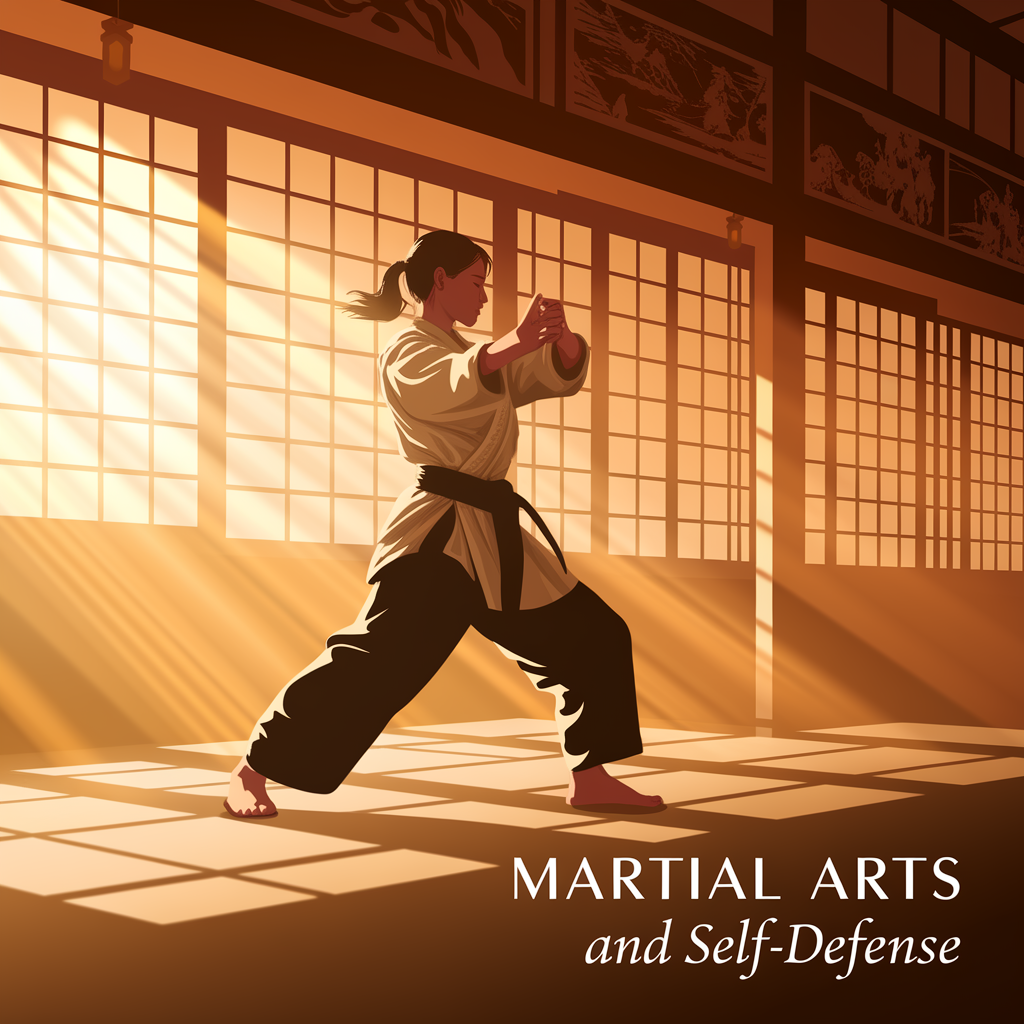A Deep Dive into the World of Martial Arts and Self-Defense
Why does the idea of martial arts capture the imagination of so many? Perhaps it’s the allure of a black belt, the thrill of competition, or the empowerment that comes from learning to defend oneself. As someone who has observed the evolution of martial arts over the years, I can confidently say that this multifaceted world is as rich and varied as the individuals who practice it. There’s a certain magic in the air when you step into a dojo or gym, a sense of community and shared purpose that transcends mere physical training.
The Origins and Evolution of Martial Arts
Martial arts have roots that extend back thousands of years, with each discipline steeped in cultural significance. From the ancient warriors of Japan practicing jiu-jitsu to the disciplined monks of Shaolin Temple practicing kung fu, the history is both fascinating and complex. The term “martial arts” itself encompasses a wide variety of fighting styles, and understanding this breadth is essential for anyone looking to dive deeper.
For example, karate originated in the Ryukyu Kingdom (now Okinawa, Japan) and has evolved over centuries, blending indigenous fighting styles with Chinese martial arts. Meanwhile, Brazilian jiu-jitsu, which focuses on ground fighting and submission holds, has roots in Japanese jiu-jitsu but was adapted and popularized in Brazil during the early 20th century. These adaptations showcase the remarkable ability of martial arts to evolve and incorporate new techniques while still honoring their origins.
Types of Martial Arts
When we think of martial arts, what often comes to mind are the flashy kicks and powerful punches we see in movies. However, the world is far more diverse. Let’s break down some of the major categories:
- Striking Arts: This includes disciplines like boxing, Muay Thai, and karate, which focus on punches, kicks, and other striking techniques.
- Grappling Arts: Here, we find Brazilian jiu-jitsu, judo, and wrestling. These styles emphasize holds, locks, and submissions.
- Hybrid Styles: Mixed martial arts (MMA) has surged in popularity, combining elements from various martial arts to create a versatile fighting style.
- Traditional Martial Arts: Styles such as tai chi and kung fu focus not only on physical techniques but also on philosophy and spiritual growth.
Each type offers a unique approach, and depending on your goals—whether it’s fitness, self-defense, or competition—there’s likely a martial art that fits your needs. (And let’s be honest, who doesn’t want to feel like a ninja from time to time?)
The Philosophy Behind the Moves
It’s easy to get caught up in the physical aspects of martial arts, but a significant component often lies in its underlying philosophy. Many martial arts emphasize discipline, respect, and self-control. A classic example is the tenets of Taekwondo, which include courtesy, integrity, perseverance, self-control, and indomitable spirit. These principles shape not just the fighter but the person as a whole.
I remember my first taekwondo class vividly. I was a nervous teenager, unsure of what to expect. But as I learned the importance of bowing to my instructor and classmates—a sign of respect—it struck me that I was part of something greater than just a sport. This sense of community and shared values was a major draw for me and countless others. (Not to mention the satisfaction of finally breaking a board!)
Self-Defense: More Than Just Fighting
Now, let’s pivot a bit. Self-defense is one of the most compelling reasons individuals seek out martial arts training. However, it’s essential to recognize that self-defense encompasses more than just physical techniques. It’s about awareness, prevention, and the ability to de-escalate a situation before it turns violent.
Many self-defense classes emphasize situational awareness—essentially, being aware of your surroundings and recognizing potential threats. This can be as simple as avoiding poorly lit areas or learning to trust your instincts. In fact, some self-defense experts argue that the best self-defense is avoiding confrontation altogether.
However, should the need arise, techniques can vary wildly depending on the martial art. For instance, Krav Maga, developed by the Israeli Defense Forces, is known for its practical and aggressive approach, teaching practitioners how to neutralize threats quickly and effectively. On the other hand, Brazilian jiu-jitsu focuses on using leverage and technique to control and subdue an opponent without relying on brute strength.
The Role of Training and Conditioning
Training is the backbone of martial arts, and depending on the discipline, it can be rigorous. The physical conditioning involved is no joke. Many practitioners find themselves sweating buckets during a class, and it’s not uncommon to feel as if you’ve run a marathon after an intense sparring session. (Pro tip: remember to hydrate—your body will thank you!)
Moreover, training isn’t just about the physical; it’s also mental. Practitioners often face mental hurdles—overcoming fear, building confidence, and developing focus. The process is akin to a mental workout, sharpening your mind as much as your body. I recall being surprised at how quickly my focus improved, not just in martial arts but also in other areas of my life. It’s amazing what a bit of discipline can do!
The Community Aspect
One of the most rewarding aspects of martial arts is the community that forms around it. Whether you’re training in a small local dojo or a large gym, the camaraderie is palpable. Partnerships develop during sparring sessions, friendships blossom during those grueling conditioning drills, and a mutual respect emerges as everyone works towards their individual goals.
In fact, many martial arts schools emphasize a family atmosphere. Students of all ages and skill levels train together, fostering an environment of support and encouragement. I’ve seen firsthand how a shy newcomer can transform into a confident fighter, all thanks to the encouragement of their peers.
Challenges and Misconceptions
While the benefits of martial arts are plentiful, it’s important to address some challenges and misconceptions. One common myth is that martial arts are solely about fighting. In reality, they encompass a vast array of skills, including discipline, respect, and self-defense, as we’ve discussed. It’s not just about learning how to throw a punch or execute a perfect kick.
Another misconception is that martial arts are only for the young and fit. Quite the opposite! Many schools offer programs tailored for all ages and fitness levels. I have seen grandmothers take up karate and kids as young as four begin their journey into martial arts. The beauty of this practice is that it can be adapted to suit anyone’s needs.
The Future of Martial Arts
The landscape of martial arts continues to evolve. The rise of mixed martial arts (MMA) has brought a new level of awareness to martial arts as a whole, drawing in millions of fans and practitioners. It’s fascinating to see how traditional martial arts are influencing and being influenced by modern styles. Moreover, the advent of technology has also played a role in shaping the future of martial arts training.
Online classes, virtual tutorials, and even mobile applications have made martial arts training more accessible than ever. It’s not uncommon to see someone practicing their forms in their living room, following a video tutorial. While nothing can truly replicate the experience of training with a partner or instructor, these resources provide valuable opportunities for learning and improvement.
Finding Your Path
If you’re ready to embark on your martial arts journey, the first step is finding the right school or dojo. Research is critical—look for a school that aligns with your goals, whether that’s self-defense, fitness, or competition. Attend classes, observe the atmosphere, and talk to instructors to see if it feels like a good fit.
As you begin training, remember that progress takes time. You might not be able to kick like Bruce Lee right away (trust me, most of us can’t), but each small victory is a step towards improvement. Celebrate your achievements, no matter how minor they may seem. It’s all part of the journey.
Conclusion: Embracing the Journey
Martial arts and self-defense offer a unique blend of physical skill, mental fortitude, and personal growth. Whether you’re looking to learn how to defend yourself, get fit, or simply find a sense of community, there’s something in this world for everyone. It’s a journey filled with challenges, victories, and—most importantly—self-discovery.
So, if you’ve ever been curious about the world of martial arts, I encourage you to take that leap. You might just find that it’s one of the best decisions you ever make. And who knows? You might even surprise yourself with what you’re capable of achieving. After all, every black belt was once a white belt who refused to give up.









